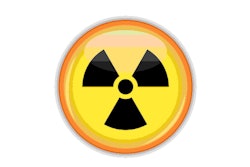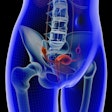Overall deaths from cancer have been declining steadily in both men and women; however, new cancer diagnoses have been increasing slightly every year among women while stabilizing for men, according to a joint report issued by the American Cancer Society (ACS).
The report, titled "2024 Annual Report to the Nation on the Status of Cancer," highlights major cancer incidence and mortality trends in the U.S., the District of Columbia, and Puerto Rico from 2017 through 2022. Details were published April 21 in the journal Cancer.
| Cancer rates (U.S., District of Columbia, and Puerto Rico) 2013-2021, excluding 2020 | ||
|---|---|---|
| Overall incidence | Death | |
| Per 100,000 men | 500 (stable) | 173 |
| Per 100,000 women | 437 (+0.3%) | 126 |
Within the findings, stomach cancer rates have risen steeply in women, with an average annual percent change of 3.2% overall and rates declining for non-Hispanic Asian or Pacific Islander women (-2.5%), the report noted. The trend is likely driven by a change in the World Health Organization (WHO)'s classification of gastrointestinal stromal tumors (GISTs) as malignant unless specifically stated otherwise by the pathologist, according to the team of authors from the ACS, U.S. Centers for Disease Control and Prevention (CDC), North American Association of Central Cancer Registries (NAACCR), and National Cancer Institute (NCI).
Led by Recinda Sherman, PhD, at the NAACCR, the group noted that prior to the WHO GIST reclassification, stomach cancer rates were stable, around 4.7 per 100,000 women from 2017 through 2019 but increased by about 13% to 5.4 in 2021, the year the WHO changed its stance.
"This is not a problem," Sherman told AuntMinnie in an email. "The higher rates show an improved assessment of the burden of cancer but not a higher risk of stomach cancer."
The breast cancer rate has gradually increased at 1.6% per year overall, with the greatest increase among non-Hispanic Asian or Pacific Islander females at 3.3%, according to the report. However, breast cancer mortality among women has fallen 42% from its peak in 1989. Sherman said this likely reflects better treatment due to a combination of factors including clinical advancement, insurance coverage, and screening.
Among males, cancer incidence rates were stable for all races and ethnicities combined and separately. However, Sherman and colleagues noted a steeply increasing trend upward for prostate cancer: 2.9% overall per year and ranging from 1.3% per year in Hispanic males to 4% per year in non-Hispanic Asian or Pacific Islander males. Lung cancer and laryngeal cancer showed steepest declining trends (a 3.4% decrease and 2.6% decrease, respectively).
Cancer incidence among children also showed recent declines (0.8% per year overall from 2017 to 2021).
"The good news is cancer mortality has continued to decline, even during the pandemic, continuing the trend of the past few decades," Sherman said.
The researchers noted that progress has been made in reducing overall cancer mortality, largely driven by sustained declines in lung cancer.
"Despite the overall progress, mortality declines have slowed for several cancers, including colorectal and prostate, partly because of a continued rise in incidence rates, either overall or in certain age groups," Sherman and colleagues wrote.
Data from 2020 were excluded from the reporting to more accurately depict the underlying burden of cancer, apart from the COVID-19 pandemic and healthcare service disruptions, according to the authors. The report includes long-term trends since 2001 and short-term trends with the most recent five years of data.
The report represents a collaborative effort by the major cancer surveillance organizations to present the definitive U.S. statistics for cancer incidence and mortality, using standardized, curated, population-based cancer registry data. Sherman said that "depending upon [the] extent of federal defunding, the accurate assessment of the burden of cancer may no longer be possible."
The complete report can be found here.




















